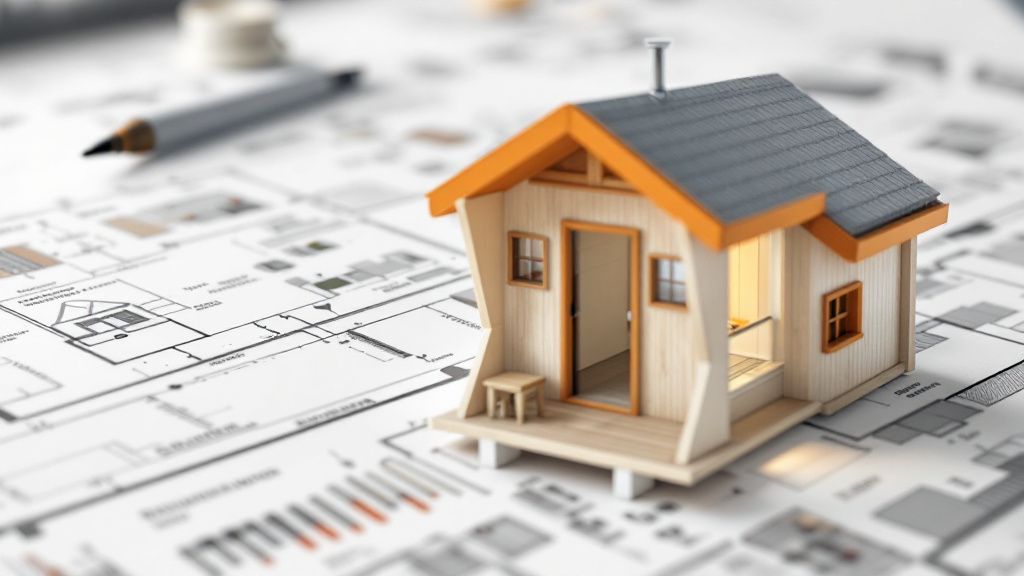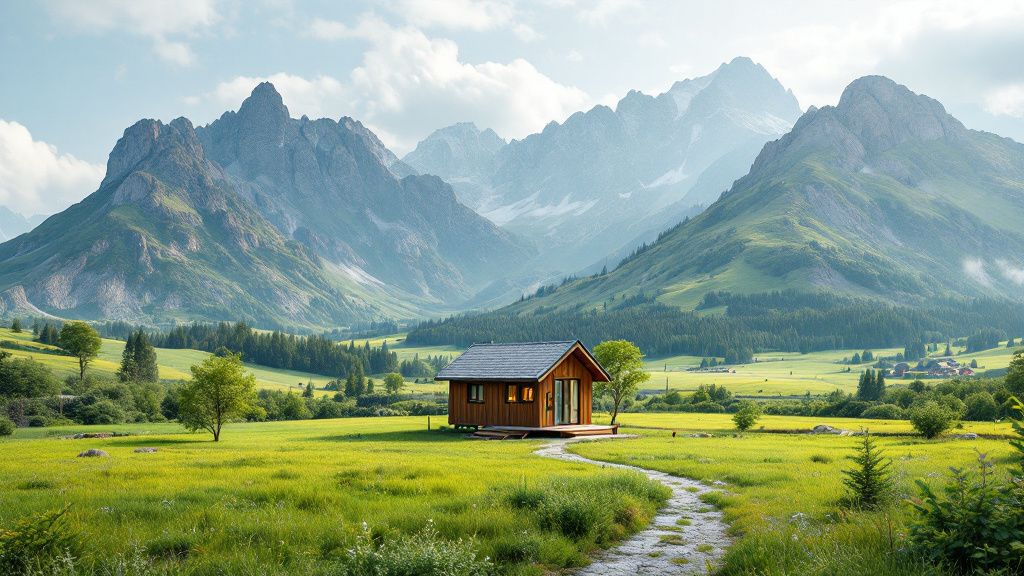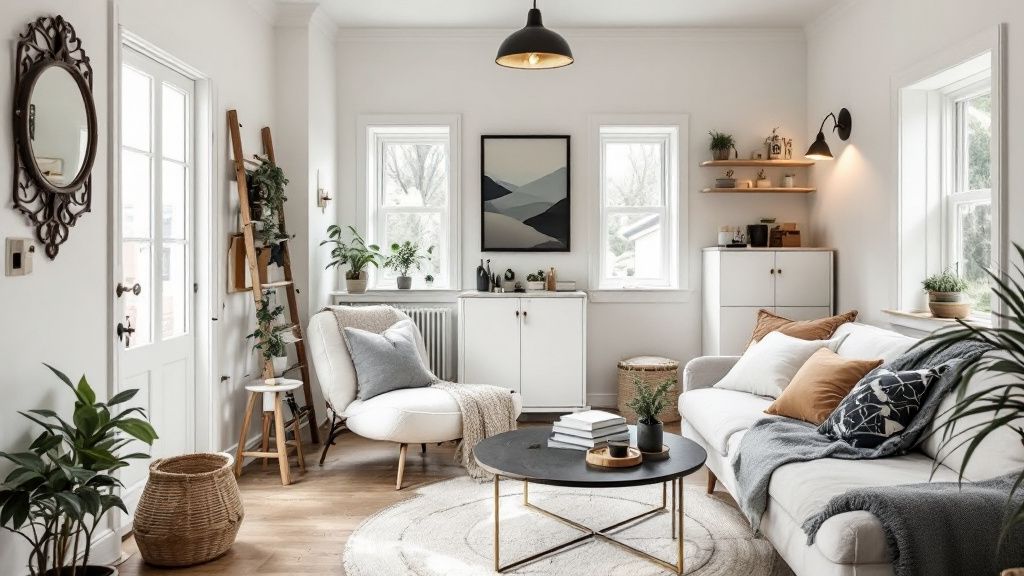How Tiny House Living Helps You Embrace a Minimalist Lifestyle
- California Tiny House
- Apr 10
- 5 min read
Updated: Apr 18
Tiny house living invites you to explore a world where less truly is more. By embracing minimalism, you discover that the essence of tiny home designs goes beyond mere square footage. It's about crafting a space that epitomizes efficiency and creativity. In a tiny house on wheels, each element of the tiny house interior design serves multiple purposes, transforming your space into a versatile haven. A carefully thought-out tiny house layout ensures that every inch is utilized effectively, providing you with functionality without sacrificing comfort. Embrace this journey and find freedom in simplicity, where sustainability meets style seamlessly.
Understanding the Tiny House Movement
The tiny house movement is a fascinating shift toward sustainable living and resourcefulness. Rooted in the desire for a simplified lifestyle, this movement has gained momentum over the past few decades, challenging traditional notions of homeownership and material possession. With its focus on minimalism, the movement inspires you to rethink what constitutes a home. It invites you to embrace tiny house interior design concepts where every nook plays a vital role in your daily life.
Tracing its evolution from the 1970s during the back-to-the-land movement, the tiny house phenomenon exploded in popularity, particularly after the 2008 financial crisis, as people searched for affordable, eco-friendly housing solutions. Today, tiny home designs are celebrated for their innovation, often incorporating sustainable materials and off-grid capabilities. Whether stationary or a tiny house on wheels, the emphasis is on creating a smart tiny house layout, allowing you to live comfortably with less, while championing environmental consciousness.

Essential Elements of Tiny House Design
Tiny house design is all about maximizing space efficiency while maintaining functionality and comfort. Each element must be carefully planned to ensure it contributes to the whole. This involves innovative storage solutions, multifunctional furniture, and strategic use of vertical space to make every inch count.
A key aspect of crafting a tiny house layout is flexibility. This means having furniture that can adapt to different uses, like a table that transforms from dining to workspace, or a sofa that becomes a bed. These design choices allow you to accommodate everyday activities without feeling cramped.
Natural light is another crucial feature in tiny home designs. Incorporating large windows or skylights not only enhances the illusion of space but also provides a connection to the outdoors, making your interior feel open and airy. This is particularly important if you choose a tiny house on wheels, as it means you can enjoy different views and environments.
One common question about tiny house interior design is how to balance aesthetics with utility. The answer lies in smart design choices that blend style with practicality. Selecting compact yet stylish fixtures, using cohesive color schemes, and opting for quality over quantity in furnishings create a visually appealing, efficient home that suits your lifestyle.

Choosing the Ideal Location for Your Tiny House
Selecting an ideal location for your tiny house involves evaluating multiple factors to ensure it meets your lifestyle and practical needs. One important consideration is whether you want your home to be stationary or a tiny house on wheels , which allows for flexibility in living arrangements. Accessibility to amenities and local infrastructure will greatly impact your day-to-day experience.
Zoning laws and regulations are pivotal when deciding on a location. Research these thoroughly, as they govern where you can place your tiny house. Some regions have embraced tiny home designs, creating communities that are legally accommodating. It’s crucial to ensure compliance with local codes to avoid legal disputes.
Furthermore, the surrounding environment should complement your tiny house interior design and desired lifestyle. Whether you prefer seclusion in nature, vibrant neighborhood vibes, or proximity to work and leisure activities, your location choice will enhance or hinder your tiny living experience. Prioritize personal preferences and practicality when making the choice to ensure your tiny house becomes a cherished home.
Legal Considerations and Zoning Laws
Understanding the legal considerations and zoning laws for tiny house living is crucial. These regulations determine where you can place your tiny home and can vary widely by location. It’s essential to research and adhere to these laws to avoid complications that could arise from non-compliance, such as fines or being forced to relocate.
To truly understand the complexity of zoning laws, you need to shift your mindset from viewing your tiny house as a regular home to recognizing it as a specialized dwelling. This perspective urges you to see your tiny house, whether on wheels or a permanent foundation, as part of a growing movement that often challenges conventional housing norms. As these norms evolve, so too may the legalities governing them.
Some regions are more flexible, offering incentives or programs that encourage tiny home designs. In these areas, governments might be more receptive to tiny house layouts within larger urban planning schemes. Conversely, restrictive zones could require additional permits or modifications, emphasizing the need for due diligence.
Engaging with local zoning boards or tiny house advocacy groups can provide valuable insight and assistance. These resources often have the latest information on regulations and can aid you in navigating the complexities of placing a tiny house on wheels or a stationary tiny home in your preferred location.

Interior Design Tips for Cozy Living
Designing the interiors of a tiny house focuses heavily on creating a cozy yet functional living space. With limited square footage, every design choice matters significantly. You can start by prioritizing multi-use furniture that helps you maintain an uncluttered, open environment. For instance, opt for a sofa that converts into a bed, or a foldable table that doubles as a workspace or dining area.
On one hand, some believe that tiny house interior design should emphasize open spaces and minimalism to avoid a claustrophobic atmosphere. On the other hand, warm textures and layers argue for spaces to feel lived-in and comfortable, suggesting that cozy nooks do not necessarily compromise on space. Blending these elements can provide a balanced atmosphere that reflects your personal taste and maximizes harmony.
Color plays an influential role in tiny home designs. Light tones can give an airy feel, making smaller spaces appear larger. However, darker shades can inject warmth and depth when used strategically to highlight features or define zones within the compact layout. Thoughtful use of color can simultaneously create visual interest and impart a cozy ambiance.
Lighting is key to cozy living in tiny homes. Combining natural light with well-placed artificial lighting enhances the feeling of spaciousness. Consider using LED strip lights in shelves or beneath cabinets for ambient lighting. Proper lighting transforms your tiny house layout into a welcoming sanctuary, encouraging you to enjoy every corner of your home.

Innovative Storage Solutions for Tiny Homes
Creating effective storage solutions is vital for the functionality and organization of tiny homes. By utilizing every available inch, you can keep your living space tidy without feeling cramped. Built-in shelving that extends from floor to ceiling maximizes vertical space, while clever cabinetry designs, such as those beneath stairs, offer discreet storage options for everyday items.
In the context of tiny house layout, multipurpose furniture is your ally. Beds with drawers beneath them and benches that open up for storage can store items out of sight and maintain a clean aesthetic. These innovative designs allow you to adapt your living area according to your needs, whether you have a stationary home or a tiny house on wheels.
Looking ahead, storage solutions in tiny home designs are expected to evolve in exciting ways. With advancements in smart home technologies and modular furniture, future innovations may further enhance how you organize and enjoy compact living spaces. Expect to see systems that integrate seamlessly with the tiny house interior design, offering new levels of efficiency and customization.
As these advancements unfold, they may offer even greater flexibility for personalizing your tiny home environment. From smart closets that help manage wardrobe options to adaptable shelving units that reorganize with ease, storage solutions are poised to enhance the quality of life in tiny homes, providing a sense of spaciousness and order.




